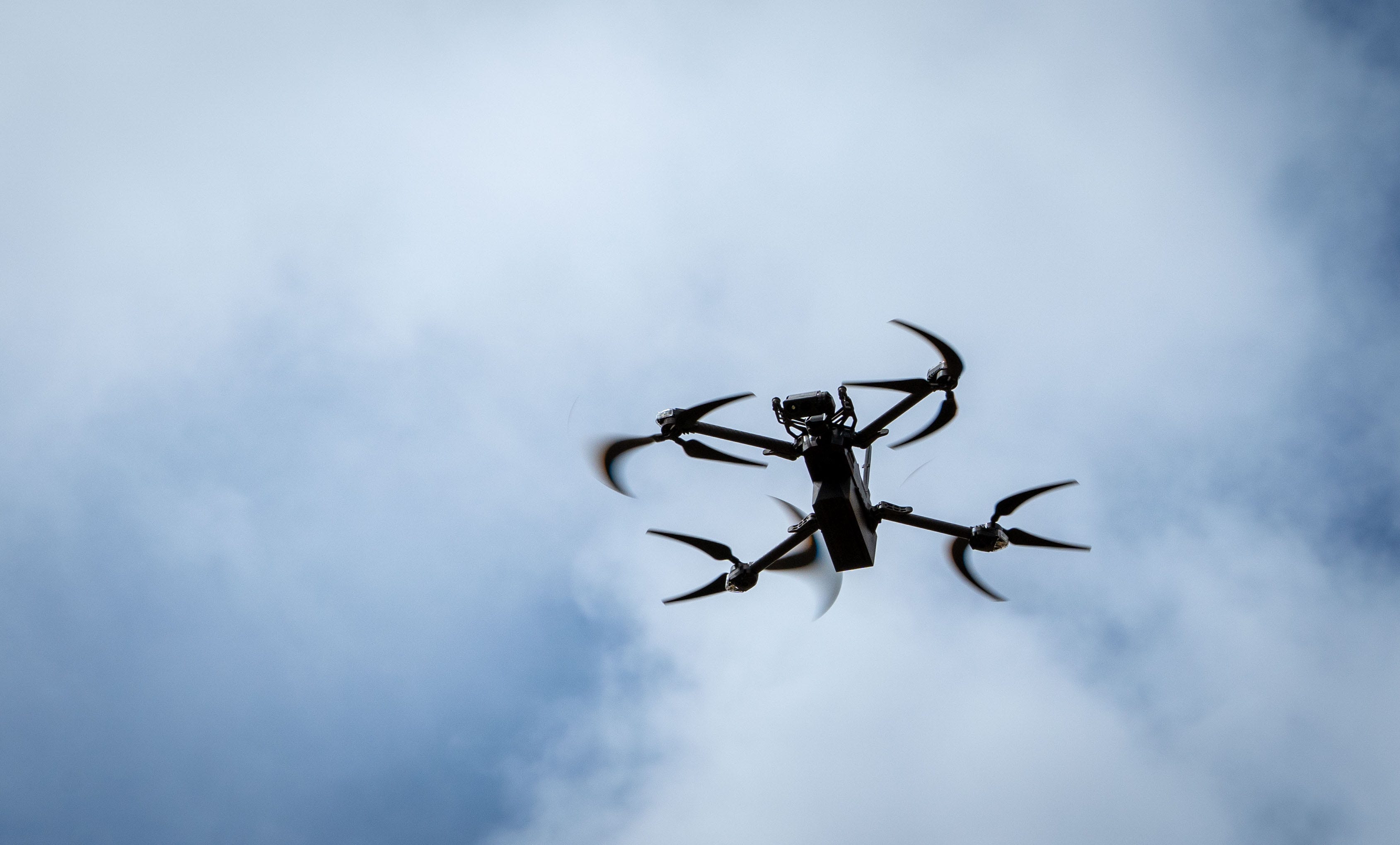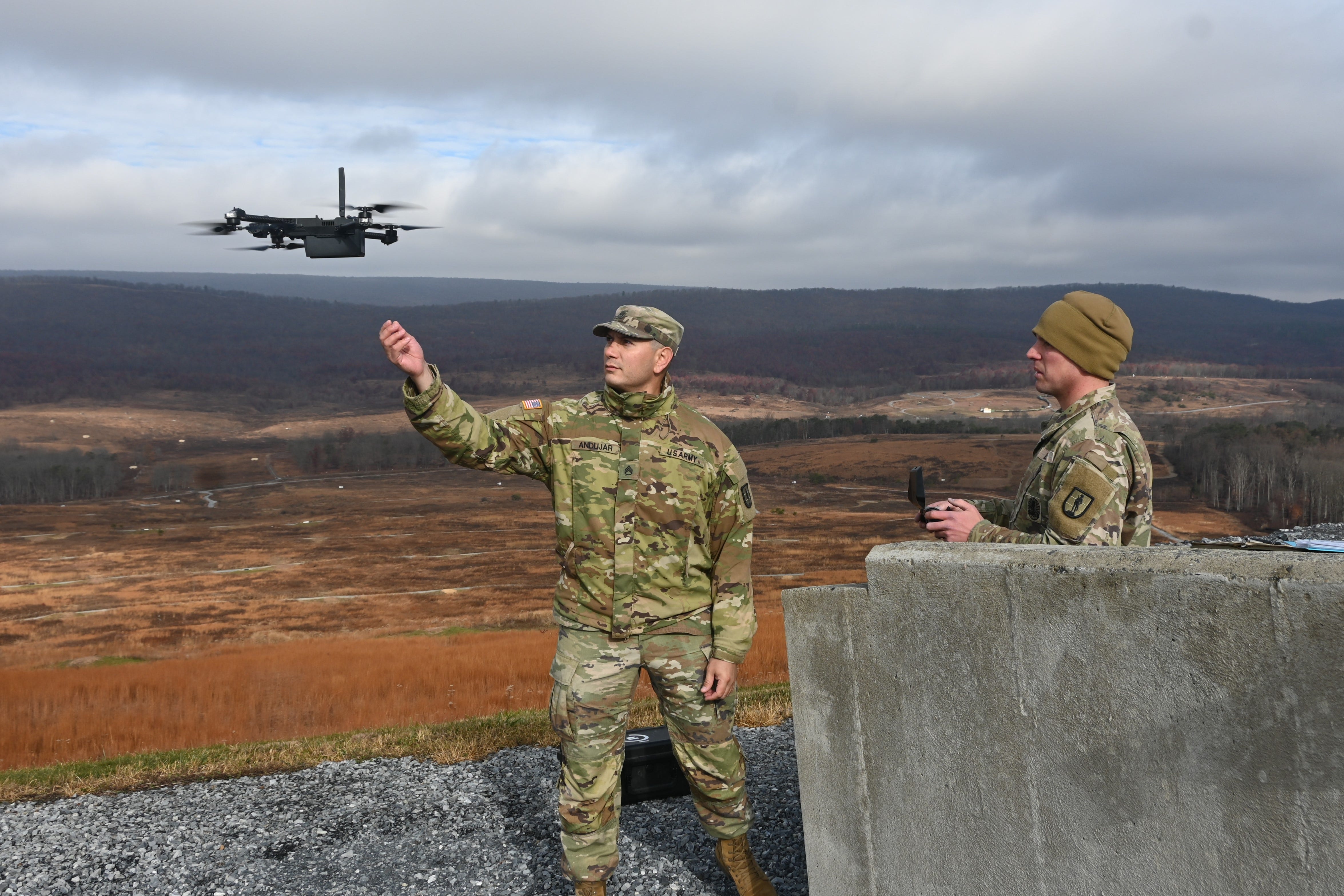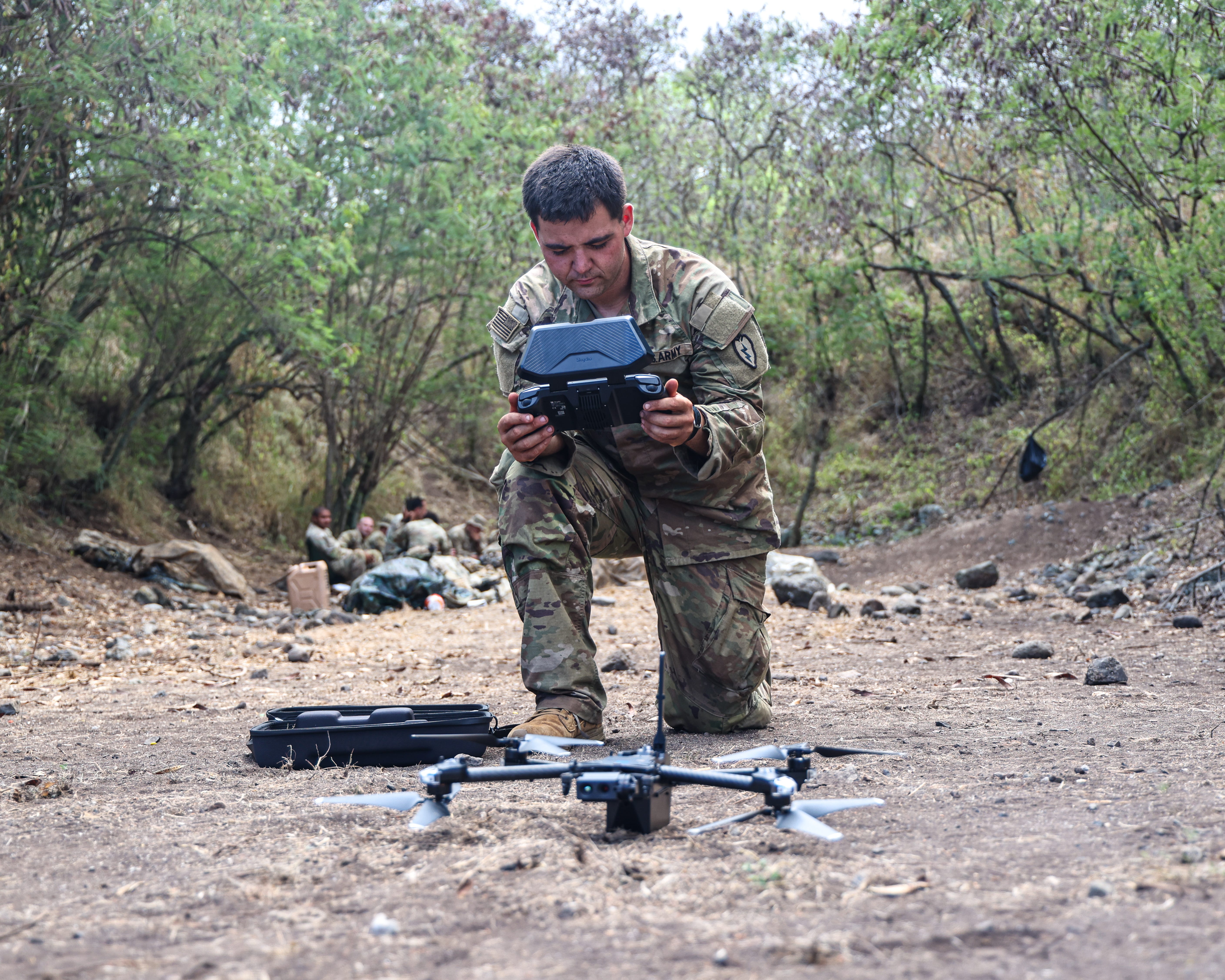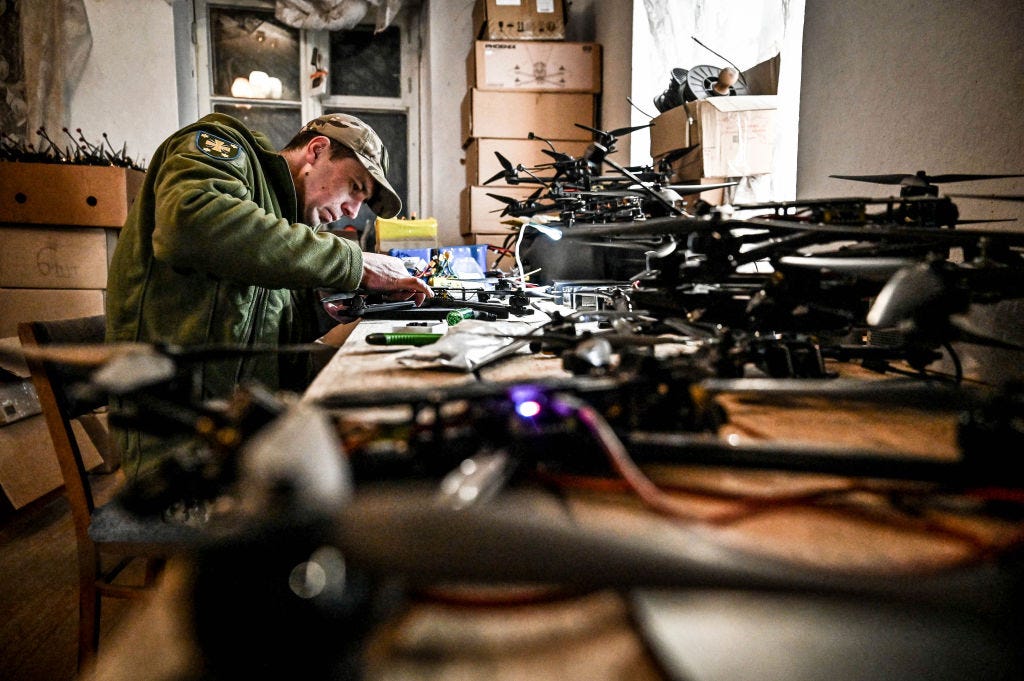
US Army photo by Sgt. 1st Class Ryele Bertoch
Drones are in high demand at the Petagon, but insiders say the market is already jammed with too many lookalike quadcopters and startups chasing the same investments and military dollars.
“We’re seeing a lot of companies in the space,” one defense industry investor, who requested anonymity to speak freely on the topic, told Business Insider, noting that in many cases, there may not be significant differences in capability between the products that these companies are delivering.
The relatively niche small uncrewed aerial vehicle market has seen a boom in competition in recent years, with many companies developing the actual uncrewed aircraft, as well as software programs and modular payloads.
Lessons from new fights

Pennsylvania National Guard photo by Brad Rhen
The Department of Defense has long used large drones like the MQ-9 Reaper built for reconnaissance and combat strike missions, but there is a growing recognition as a result of the Ukraine war and engagements in the Middle East that low-cost, attritable first-person-view (FPV) drones have a place in modern warfare.
Heightened interest in these capabilities is, in turn, fueling the drone market and creating new research and development pathways even without programs of record.
The yearslong war in Ukraine has driven significant advancements in aerial drones but also uncrewed ground and surface vehicles, sensors, electronic warfare, reconnaissance and intelligence systems, and more.
“In the last five years, new technologies that are on display in Ukraine, they have a pretty big impact on warfare,” Michael Brown, a partner with venture capital firm Shield Capital, told BI.
Only the strong are likely to survive

US Army 25th Infantry Division/Staff Sgt. Brenden Delgado
Within the US market, a lot of new drones are in technology demonstration programs. DoD is effectively putting out information on the types of systems and capabilities it wants. Various industry partners are applying with their solutions. Eventually, these will evolve into programs of record, and the competition will thin down dramatically when awards are granted to specific companies.
Melissa Johnson, US Special Operations Command’s acquisition executive, said the acquisitions, technology, and logistics team was “transparent with industry when issuing solicitations to communicate the needs of Special Operations Forces.”
She said that this process involves looking at a variety of factors, including “performance, manufacturability, operational considerations, and affordability.”
As the market becomes oversaturated with drone makers producing similar products, companies are increasingly trying to distinguish themselves in capability, as well as adaptability to countermeasures, such as electronic warfare.
Not all of the companies rushing in are going to be competitive in the long run. Some won’t be able to create a great product; others may not be able to scale up production to meet military demand.
One drone maker, who requested anonymity to speak openly on the topic, said the current situation is comparable to the early automobile industry. “100 years ago, you had a bunch of companies trying to produce cars, and at the end of the day, the strong survived. I think that’s what you’re starting to see now.”
Cautious investing

Ukrinform/NurPhoto via Getty Images
Drones are not exactly a new focus for American defense companies. In the mid- to late-2010s, a small but still substantial number of businesses were developing drones like small UAVs amid the growth of commercial drone development. Costs, mass production, and capabilities weren’t clear, though, and many of these companies were unsuccessful or shifted focus.
That could be shaping how investors think about where to put — or not put — money into the market even if there are many more companies to work with. “I think investors are a little scared about investing into an industry that historically, for small drones, has not been very profitable,” the drone maker said.
The nuance there, he said, is that Ukraine’s use of drones and its sprawling defense industry have demonstrated a different look at the modern battlefield and the industries needed to sustain a war. Kyiv’s drone makers are pumping hundreds of thousands of them, many with Chinese drone parts, out each month at relatively low costs.
The US situation is a one-for-one, though. Chinese parts are a definite no-go, increasing the need for domestic supply chains. That said, there isn’t a wartime demand for millions of combat drones the way there is in Ukraine.
One of the biggest questions is whether the Defense Department will buy enough small drones to make these business endeavors profitable in the near term.
Looking at small drones, “if the US continues to only purchase 12- to 15,000 drones a year, having 300 vendors is probably not going to satisfy market dynamics of returning the majority to those vendors,” Sarah Pearson, deputy director for commercial operations at DIU, told BI.
DIU’s perspective is that competition in the market can push vendors to build better capabilities and ultimately lead to the best possible product.
Concerns, however, remain over whether DoD would continually buy enough drones to keep businesses going. “If we buy, call it 10,000 drones, unless we’re in high-intensity conflict,” the industry investor said, “I don’t necessarily know that I see a world where we’re replacing 10,000 drones every year.” And if that’s not the case, it is an issue for the drone business.
The post Drone overload: Too many people want to sell drones to the US military appeared first on Business Insider.




